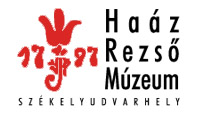Kovács Petronella (szerk.): Isis - Erdélyi magyar restaurátor füzetek 20. (Székelyudvarhely, 2020)
Focht Anna: Gorka Géza padlóváza restaurálása
the last decades of the 14th century, both regarding style and painting technique. Dr. Erika Tímea Nemes Painting conservator MA Translated by: György Kovács-Gorboi István Bóna What will happen after the detachment of murals? Removing of murals from the wall is probably the most controversial intervention of conservation. The taking artefacts off the place where they were created deteriorates the monuments and the murals as well. The most responsible consideration and preparation is needed when removing a wall painting, while its future should be assured as well before detachment. The reality is that detachment is often asked for from conservators because the work of art is no longer desired (for some reason). The client does not even have in mind to care about the removed wall painting and in absolutely no case wants to spend funds on it later. Many of the detached murals do not reach the standard that a museum requires to be on display or it is not suitable for decorating any public institution. After being taken off the wall these works of art are abandoned during the intervention, they lie in the depths of warehouses, and finally they fade into obscurity. Likewise, it happens that the mural has to be detached because it hinders some other works on the monument. In such cases, it is common demand for the painting to return to its original location after the procedure. There are times when the wall painting is honestly intended to be preserved by detaching it and transferring it to some new medium. The murals are removed from the wall where severe damaging processes take place, trusting that these processes will be decelerated (or even halted). It is believed that on a reliable medium the painting can endure a prolonged time in a museum without damages, however in most cases the detached murals need conservation and are often complicated to treat. The current literature does not consider the interaction of the new medium and the murals on them to be a considerable problem. According to the literature, unvarying, manageable and preferably not too expensive solutions are supposedly appropriate. This paper not only attempts to inform that media can be sources of further damage, but at the same time some solutions are suggested that, according to our knowledge, are the least perilous. The use of water-based fixatives and adhesives, as well as materials with good thermal conductivity such as metals, are recommended to avoid. Some specific solutions are presented in the study; as substrates: plastic and glass foams, polycarbonate and epoxy-glass-based composite sheets, although there are other good solutions that are omitted due to extent reasons. Among the adhesives, the one-component neutral silicone rubber and various polyurethane products have already proven satisfactory in practice. István Bóna Painting conservator DLA Translated by: Eszter Tóth András Morgós - István Sajó - Takeshi Minami Non-destructive investigation of pigments of 17-19,h century painted furniture from the region of Segesvár (Sighişoara) and Kőhalom (Rupea), Transylvania with a portable X-ray fluorescence spectrometer. Contribution to orpiment-indigo green and its components From the middle of the 17th century, the Transylvanian painter-carpenters not only constructed furniture fulfilling church orders, but the wealthy urban and rural population were among their customers. Perhaps the most beautiful and elaborate pieces of Transylvanian painted carpentry-furniture made for secular purposes that have survived in this region were created in the cities and vicinity of Segesvár (Sighişoara) and Kőhalom (Rupea). Pigments of five painted carpentry objects from the mentioned area were examined using a portable X-ray fluorescent (pXRF) elemental analyzer. Four of the five objects have a special motif of a castle/church typical for this area. One of the examined furniture, a front part of a chest is decorated with large flowers (ca. 1680-1720), while all the others were painted with castle /church motif: a small wall cabinet (1769), a large wall cabinet (180(3?)), a wall hanger for decorative jugs and plates (1820s) and a bench-chest (1836). The time-span of the production dates of these furniture covers approximately 150 years between ca. 1680 and 1836. The paper discusses the basics, advantages, disadvantages, limitations, problems and pitfalls in the evaluation of measured data of non-destructive pXRF elemental analysis summarized for conservators, and the results were interpreted in comparison with the stratigraphic structure of the painting at the location of measurement. Large amounts of calcium has been found at each measurement point, therefore the different colours and pigments were not used pure, but always mixed with white pigments such as gypsum or chalk/lime. In most cases, these white pigments cannot be distinguished from each other by pXRF because the detection of sulfur is generally unreliable. The pigments identified in the different colours were as follows: Red colour of the chest is proved to be a mixture slightly different from the others. The red pigment mixture used on the front panel of the chest: red lead, orpiment, red ochre (iron oxide red) and probably gypsum (based on gypsum detected in the white paint of the same object). 232
